|
|
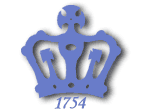 |
 |
 |
 |
|
FEATURESMaking Holidays Sparkle
|
|||||||||||||||||||||||||||||||||||||||||||||||||||||||||||
|
|
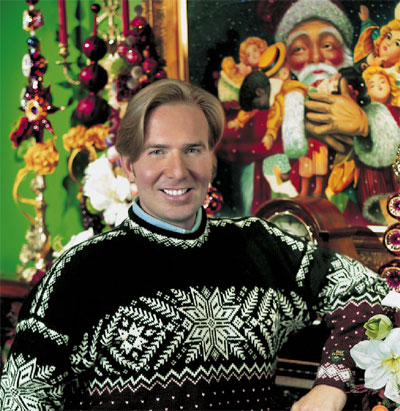
|
From the original 65
ornaments, Christopher Radko ’81’s offerings now
number 900. PHOTOS: © STARAD, INC. BY CHRISTOPHER RADKO. ALL RIGHTS RESERVED. |
Christopher Radko ’81’s career began with a bang, albeit an unfortunate one. In December 1984, Radko urged his family to replace its rusty old Christmas tree stand with a newer model. A week before the holiday, the tree, in its new stand, abruptly fell over, and thousands of exquisite, mouth-blown European glass ornaments — family heirlooms dating back decades — came crashing down with it.
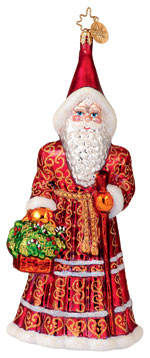 Radko
hadn’t exactly been in his father’s good graces before
the boughs broke: At Columbia, Radko rejected his father’s
entreaties to go pre-med and dropped the sciences to major in English.
After graduation, Radko’s father put down a deposit for Radko’s
first semester at the Law School, but Radko went to Paris and taught
instead. At the time of the tree disaster, Radko was in New York
working in a talent agency’s mailroom and earning $8,000 a
year, far from the advanced-degree professional his father had envisioned.
Radko
hadn’t exactly been in his father’s good graces before
the boughs broke: At Columbia, Radko rejected his father’s
entreaties to go pre-med and dropped the sciences to major in English.
After graduation, Radko’s father put down a deposit for Radko’s
first semester at the Law School, but Radko went to Paris and taught
instead. At the time of the tree disaster, Radko was in New York
working in a talent agency’s mailroom and earning $8,000 a
year, far from the advanced-degree professional his father had envisioned.
Radko, then 24, set out to replace some of the ornaments, but could find only cheap plastic varieties. While traveling the next summer in Poland, his parents’ homeland, Radko found a man who was willing to make glass ornaments — similar to those that had adorned the Radko family tree — under his direction. Radko brought them back to the United States and showed them to his coworkers at the talent agency, who placed orders. Soon after, Radko began taking a shopping bag of samples door-to-door to Manhattan retailiers on his lunch hour, hopeful of supplementing his mailroom wages.
Within two years, Radko had sold $100,000 worth of ornaments. He quit his job at the talent agency and devoted himself full-time to his new business. “I was tickled pink to be able to do it, because I love Christmas, I love the holidays and I love the sparkle,” Radko says. “I love that any holiday is a chance to connect with the people we care about.”
With L’Affaire Fir behind them, Radko reconnected with his father, Dr. Stan Radko. The senior Radko passed away in 1998, but he lived to see the company take off and to see his son become a success story that could only be described, appropriately, as smashing. In 2003, sales at Christopher Radko (www.christopherradko.com) totaled $50 million.
Radko skipped his senior year of high school in Scarsdale, N.Y., and started college at 16. When his early encounters with calculus and organic chemistry resulted in Cs, he confided in his pre-med adviser, Patricia Geisler, that he didn’t want to be a doctor and was only doing it to please his father. She steered him toward law and told him he could major in whatever he wanted so long as he did well on the LSATs. Radko soaked up the course material in his Elizabethan literature classes and enjoyed the Columbia theater scene, where he met Jo Barry (neé Slosberg) Barnard ’81. Soon after, he asked her to type a paper for him. They have been friends since, and Radko is godfather to Barry’s son.
 Although
Radko points out that “there are no pre-ornament classes at
Columbia; it’s not something you grow up expecting to do,”
Barry says she’s not surprised that her friend commands a
business with 85 full-time employees in the U.S. and manufacturing
operations in Poland, the Czech Republic, Italy and Germany. She
remembers Radko doing internships at the United Nations and with
a Broadway show. “It was important for him to expand his contacts,
to be around other successful, creative people,” Barry says.
“This was at 17. He was extremely determined, very motivated,
and thought outside the box from the beginning.”
Although
Radko points out that “there are no pre-ornament classes at
Columbia; it’s not something you grow up expecting to do,”
Barry says she’s not surprised that her friend commands a
business with 85 full-time employees in the U.S. and manufacturing
operations in Poland, the Czech Republic, Italy and Germany. She
remembers Radko doing internships at the United Nations and with
a Broadway show. “It was important for him to expand his contacts,
to be around other successful, creative people,” Barry says.
“This was at 17. He was extremely determined, very motivated,
and thought outside the box from the beginning.”
Barry also recalls Radko dragging her up to his father’s home in Westchester during a Christmas break to see the huge family tree that Radko had trimmed. “He had decorated the entire house,” Barry says. “He was such an unusual boy, 6-foot-4, skinny and just funny.” (Radko was so thin during college, Barry says, he used to wear a double layer of long underwear beneath his suits to fill himself out when they went dancing.)
A few years later, when the ornament business was in its infancy, Radko went to St. Louis for Barry’s son’s christening. He brought his samples, and he and Barry made the rounds to gift stores. There was no rejection; each shop placed an order. The ornaments, with their original designs, high-quality materials and detailed hand painting, were unusual, and nobody else in the country was offering anything like them. But Radko’s success, Barry believes, “was as much the force of his personality as it was the product. He was charming, and he connected with the buyers.”
In the business’ first two years, Radko used two weeks of vacation from the talent agency to travel to Poland and work with artisans developing the ornaments he had designed. Together, they perfected a seven-day manufacturing process that starts with the glassblowing and ends with each piece receiving a dusting of glitter and the trademark gold Radko crown. Radko then would fill a container with ornaments, ship it to his mother’s home in Westchester and fulfill orders out of her garage, employing out-of-work actors to help him with the packing. “I learned the business from the bottom up,” he says, “by doing every aspect of it myself at one point.”
The first department store to buy his line was I. Magnin; Bergdorf Goodman, Bloomingdale’s and Macy’s followed shortly thereafter. In 1987, Radko moved the business to his studio apartment on the Upper West Side and hired his first full-time employee. “He didn’t sleep; he poured everything into getting this business going,” Barry recalls. “We would laugh, because he fell into it, but it made perfect sense. It fit his personality and his gifts so well. It allowed him to do something creative but at the same time not be cooped up some place. He likes people too much for that.”
Radko was his own publicist, sending samples to magazine editors and hoping coverage would bolster sales. What he couldn’t have predicted was that celebrities would be drawn to the product. One day he received a call from a retailer telling him that Bruce Springsteen had just been in and placed a large order. Dolly Parton, Julie Andrews and Tom Cruise have his ornaments, as do Katie Couric and Oprah Winfrey, both of whom have had Radko on their shows. Barbra Streisand convinced him to make Hanukkah ornaments. Hillary Clinton asked him to design Christmas displays on the mantels of the White House Green Room and Red Room, and he decorated the vice president’s residence when the Gores lived there. He also has lent his design touch to New York’s Gracie Mansion during the holidays.
|
|
Each year, two-thirds of the collection is retired and replaced with new designs. So far avid Radko collectors, the collection never is complete. |
From the original 65 ornaments in his first collection, Radko’s product offerings have grown to include 900 ornaments this year, for every holiday and occasion. He also produces Home for the Holidays, a line of ceramics, snow globes, pillows, jewelry and dinnerware, and Shiny-Brite, ornaments based on vintage American styles from the ’40s. Radko conceives all the designs, then works with his technology team to transfer the ideas to three-dimensional computer models that the carvers use for making molds.
Each year, two-thirds of the collection is retired and replaced
with new designs. So for avid Radko collectors, and there are thousands
of them, the collection never is complete. Among the current selections
on Radko’s website are a two-inch snowman head and top hat
called “Snow Smirks Gem,” which retails for $24, and
an 8.5-inch limited edition nutcracker called “Chivalrous
Cracker,” which fetches $74.
The prices may be steep, but as soon as the company started making money, Radko began giving some of it away. He creates about 12 special designs annually, and their profits support such causes as breast cancer, diabetes and AIDS research. In the days after 9-11, Radko designed the Brave Heart ornament, a 4.5-inch heart with an American flag that benefited the disaster relief fund of the American Red Cross. Radko’s v.p. of sales, Clark Gulliford, notes that sales of that ornament totaled nearly $8 million.
Radko also sponsors an orphanage in Poland near one of the glassblowing factories. The facility houses 65 children, ages 5–18, all of whom are wards of the state. He visits at least once a year, and Barry recalls how on another visit to St. Louis, Radko asked her to set up an appointment for him with the principal of the private school her two children attended. Radko quizzed the principal on what sort of supplies a school would need — everything from pencils, paper and chalk to art supplies. He made a huge list, bought it all and sent it to Poland.
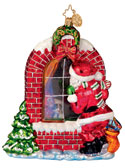 Radko
sees the holidays as a chance for people to connect, and he has
carefully replicated that sense of connectedness with his retailers
and collectors. Not including the department stores, more than 2,000
retail shops sell Radko’s pieces, and he and his 28-person
sales force travel frequently to the shops, large and small, to
lend their expertise at drawing customers in the door. They’ll
assist with everything from window displays to database marketing
to hosting special events.
Radko
sees the holidays as a chance for people to connect, and he has
carefully replicated that sense of connectedness with his retailers
and collectors. Not including the department stores, more than 2,000
retail shops sell Radko’s pieces, and he and his 28-person
sales force travel frequently to the shops, large and small, to
lend their expertise at drawing customers in the door. They’ll
assist with everything from window displays to database marketing
to hosting special events.
But it’s the individual collectors who go gaga over Radko, who visits at least 50 stores annually for events. Right now, he is in the midst of a 35-store tour that will end before Christmas. Last year, at an event at Roger’s Gardens in Corona del Mar, Calif., that was scheduled to begin at 1 p.m., collectors and fans started lining up at 6 a.m. “They’re ecstatic when they meet him,” Gulliford says. “Many of the collectors will come year after year, and he’ll remember things they talked about in the past. He’ll say, ‘How’s your daughter?’ or they’ll share their ideas for ornaments. Sometimes, he’s with one customer 10 minutes.” When Gulliford started at the company six years ago, Radko chastised him for trying to move people through the line more quickly. “He wants quality time with each of the customers,” Gulliford says.
The Internet also testifies to Radko’s popularity. At any given time, Radko ornaments are being auctioned on eBay for several hundred dollars apiece. Many collectors post photos of their homes at various holidays, decked out in Radko-designed motifs. They’ll even approach him on the street. “I don’t expect it, but I appreciate it,” Radko says. “People who collect my ornaments love Christmas, and maybe the ornament has brought some happiness into their family. They tell me that, and that’s cool.”
Radko’s business will celebrate its 20th anniversary next
year, and he has reaped the benefits of running a successful enterprise.
He owns homes in Westchester and on Central Park West, where he
has a rooftop garden (he is passionate about gardening) that was
the setting for the first five minutes of the 1999 film The Talented
Mr. Ripley. But Radko doesn’t allow himself much free time
to enjoy the fruits of his labor, as he remains hands-on with his
business. He 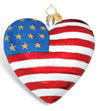 maintains
a grueling work schedule, including travel to Europe and signings
and appearances at stores and on television. “You need to
keep an eye on all aspects of the company,” Radko says. “I
care a lot about the integrity of my creation, and I don’t
take shortcuts. I’m single, so that kind of tells you I’m
spending too much time at work.”
maintains
a grueling work schedule, including travel to Europe and signings
and appearances at stores and on television. “You need to
keep an eye on all aspects of the company,” Radko says. “I
care a lot about the integrity of my creation, and I don’t
take shortcuts. I’m single, so that kind of tells you I’m
spending too much time at work.”
“He is as driven and motivated as ever,” Barry says. “I don’t think that’s a quality that goes away.”
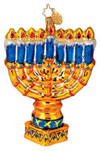 Radko
wouldn’t have it any other way, and he rarely stops long enough
to take measure of what he has done. “I treat my life on a
day-by-day basis; I measure my life in increments that small,”
he says. “At the end of the day, I look back and say, ‘This
was a good day.’ I just want to live to be a ripe old geezer
and continue to love my work and bring smiles to future generations.”
Radko
wouldn’t have it any other way, and he rarely stops long enough
to take measure of what he has done. “I treat my life on a
day-by-day basis; I measure my life in increments that small,”
he says. “At the end of the day, I look back and say, ‘This
was a good day.’ I just want to live to be a ripe old geezer
and continue to love my work and bring smiles to future generations.”
Sarah Lorge Butler ’95 is an editorial projects writer at Sports Illustrated.
| || | || |
CCT Home |
|
|
CCT Masthead |
 Following
a family mishap, Christopher Radko ’81 built a thriving business
producing quality ornaments for Christmas and other occasions
Following
a family mishap, Christopher Radko ’81 built a thriving business
producing quality ornaments for Christmas and other occasions